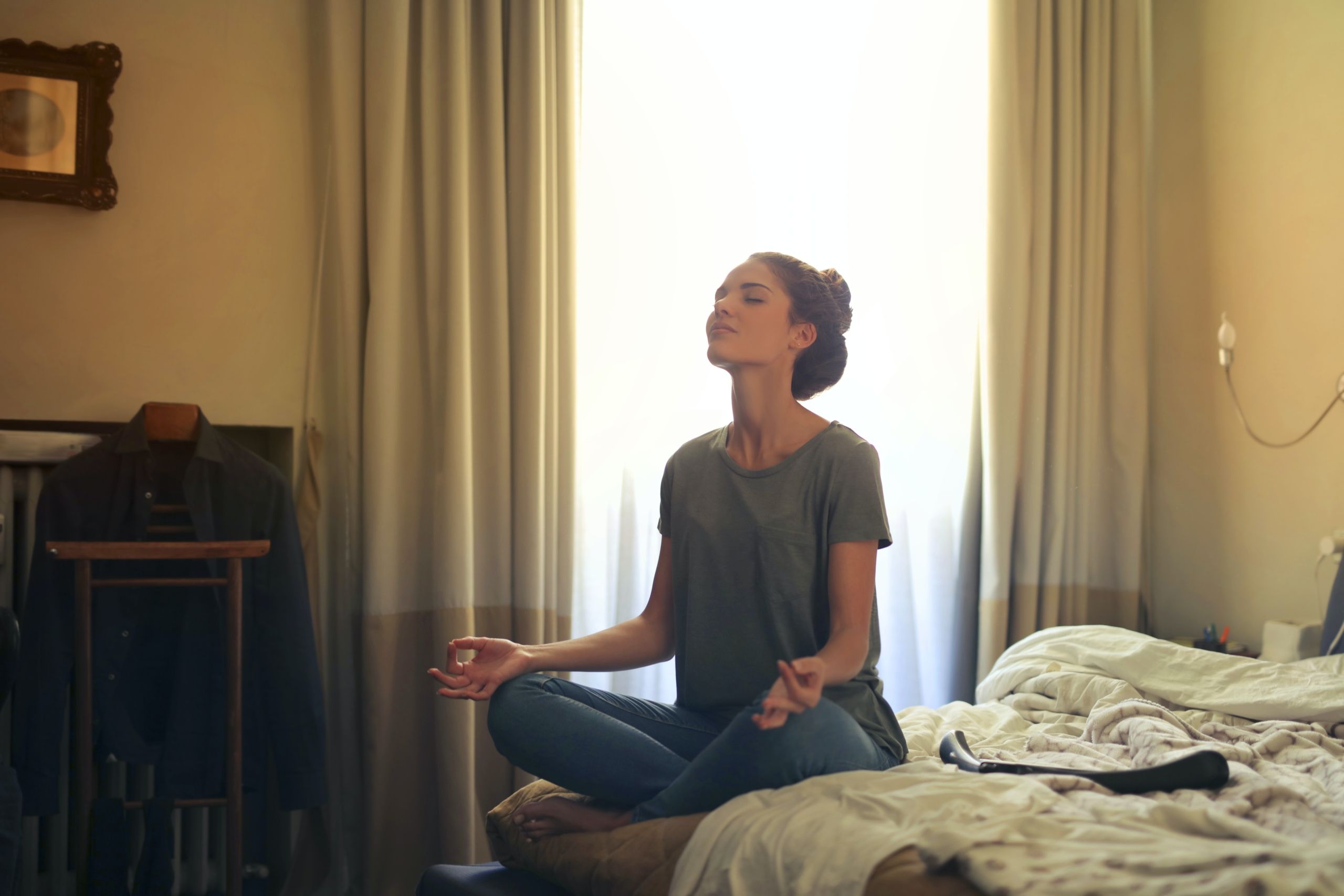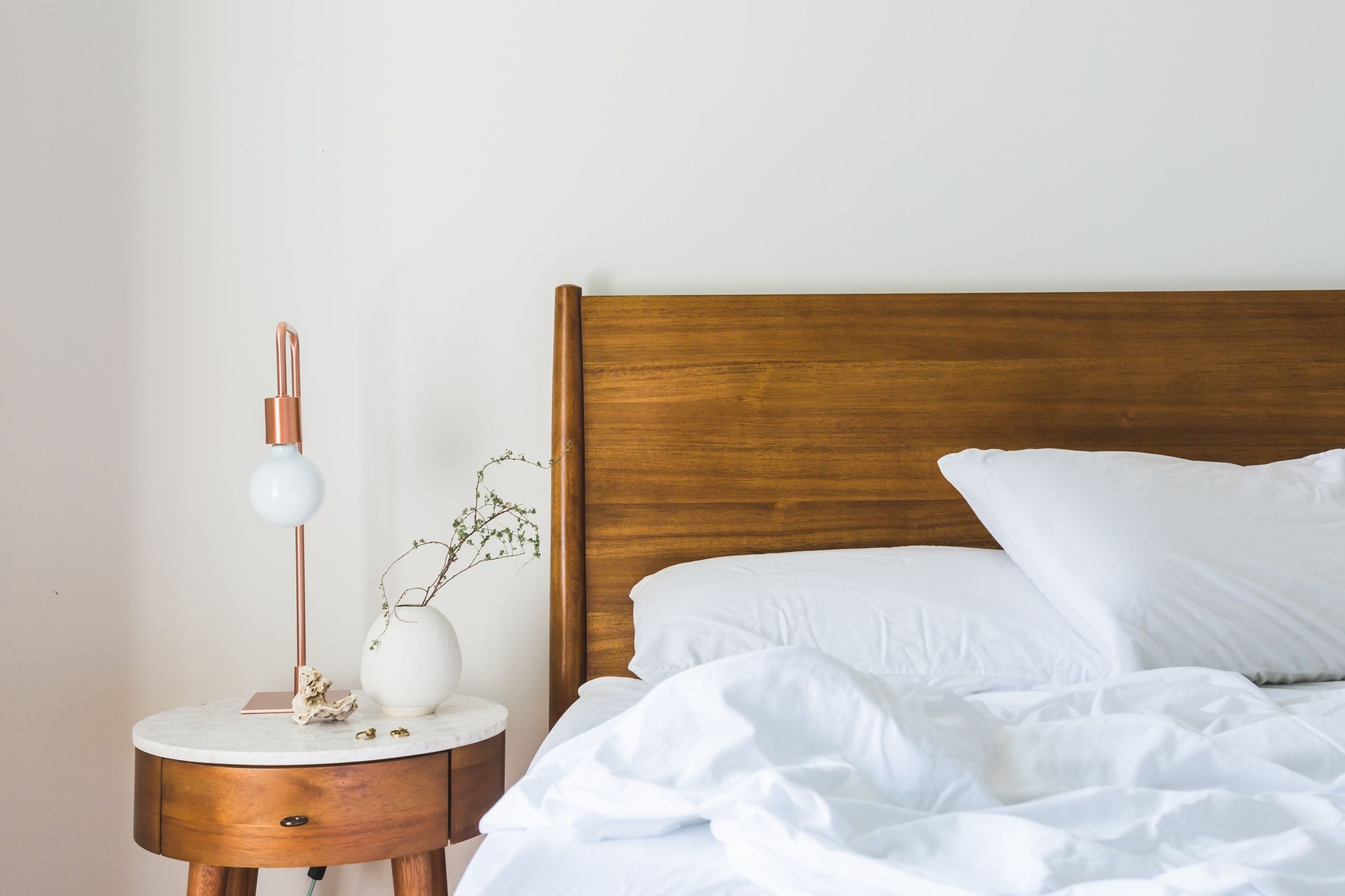Some people keep a very strict diet for a healthy life, and some exercise daily, but only a few of us spend as much time focused on a good and healthy night of sleep. A good night's sleep is very significant for our health and wellbeing. It keeps you healthy while building the body’s defenses against infections. Moreover, a good night’s sleep makes you more energetic and happy, as well. Therefore, having a quality night’s sleep becomes very important. Meditation for sleep can be a great option.
It may be difficult to get good and wakeless sleep as we get older. On the other hand, problems in life, such as anxiety, stress, depression, or even a huge workload, may cause a sleep disorder. It may be very difficult to get a good night's sleep while struggling with many problems. Sleeping problems may lead to insomnia symptoms related to those stress factors that cause anxiety and tension. Furthermore, it is found that serious illnesses, like obesity and cardiovascular diseases, are very much related to the quality of our sleep cycle.

In these situations, meditation is an effective option for a good night’s sleep. It is obvious that meditation may help us to reduce the impact of daily stressors. Meditation designed for sleep may decrease stress levels in the body and prevent problems, like insomnia and stress-related anxiety and tension, by building inner peace. While it reduces the risk of having serious physical problems, it also helps us to be healthy psychologically, which is definitely related to sleep quality.
How Does Meditation for Sleep Help Us?
Basic meditation techniques are grounded in the idea of training oneself to be more aware of the present moment. In our daily lives, we are mostly in our heads, thinking about the past and planning for the future. Thoughts come and go, and we cannot even recognize our breath cycles. Also, most of us hold our breath while we are in a workload. This situation may increase in bedtime. Thoughts come and go, and it becomes harder to fall asleep.
Meditation helps us to recognize our breathing and to be aware of the present moment, teaching us to be conscious of what is going on right now in both our body and mind. It offers us healthier sleep by teaching to get rid of the thoughts of the day and enables us to rest the entire self. Furthermore, meditation for sleep is more specific and easy to follow. There are many options for those who don’t know how to practice meditation on their own.

In addition to the psychological benefits of meditation, a variety of physiological changes occur.
In daily life, we mostly activate our sympathetic nervous system, which creates the fight-or-flight response in our body. That’s why anxiety and stress levels in the body may increase. Meditation helps to activate parasympathetic nervous systems, which helps the body to lower the heart rate and slow the breathing. This leads us to have a more restful night’s sleep, as well.
Moreover, research shows that mindfulness-based meditation practices help older adults to overcome sleeping issues. When meditation is used as a relaxation technique, it is useful in the treatment of insomnia, builds sleep hygiene, and helps to facilitate falling back to sleep.
Meditation for sleep may decrease the risk of heart disease, obesity, and other chronic illnesses if it is practiced regularly. Although these are serious problems, if we set up a good and healthy sleeping ritual, we can not only help prevent these problems, but meditation may improve some cognitive functions, such as focus and decision making. By building mental clarity, it makes us produce more melatonin and serotonin (hormones of sleep and happiness).
Meditation Techniques for Better Sleep
Although it may seem complex if you’ve never tried sleep meditation, there are tons of techniques for meditation, from simple to complex. Here are some of the basic meditation types that can be used before falling asleep.

1. Guided Meditation
If you’ve never meditated before, guided meditation for sleep can be the best option for you to try. Guided meditations are easy to follow and let yourself go from thoughts. It is led by an experienced practitioner and walks the listener through each step of meditation. The guidance instructs you when to breathe and what to visualize. In most guided meditations for sleep, you lay down on your bed. To practice guided meditation for sleep, you can use meditation apps like Insighttimer, podcasts on Spotify, or Youtube videos. The rest is simple:
- Lay down on your bed.
- Slow your breathing and relax.
- Start to listen and focus on the guidance.
2. Shamatha Meditation
Shamatha meditation can be described as a mindful concentration. It stabilizes the mind and creates awareness by using the breath as an object to be focused on.
The basic principle of shamatha meditation is to allow one to experience the mind extrajudicially, as it is. One can recognize when the mind is full of thoughts and learn to accept it naturally by using shamatha meditation. That’s why it can also be practiced as a meditation for sleep before going to bed.

Here are the steps of shamatha meditation:
The shamatha meditation technique is practiced when the spine is vertical. That's why you should first sit cross-legged or on a chair, sitting straight up in a quiet area.
- Put a pillow underneath your hips to continue to sit upright through the practice.
- You can choose to position your hands in your lap or on your knees.
- Relax your shoulders and jaw and lower the chin a little bit, bringing it close to the chest.
- The eyes can be closed, slightly open, or focused on one point.
- Bring your awareness to your breath. Notice the inhalation and exhalation.
- If any thought arises, don't judge yourself. Just recognize the thought, let go, and return to your breathing again.
- Keep following your breathing and refocus each time you are distracted by something.
- Continue to practice for a minimum of 3-5 minutes before going to bed. Slowly increase it to 10 to 15 minutes.

3. Body Scan Meditation For Better Sleep
Body scan meditations take more time, approximately 30-40 minutes. It is basically grounded on scanning each part of the body. When you focus on each part of the body, you can learn how to bring your full attention to the present moment. The main idea of the body scan meditation is to be aware of both pleasant and unpleasant feelings in the body and accept them as they are.
If you don't know how to practice a body scan meditation, you can be guided through it. There are many guided body scan meditations on different platforms. Otherwise, you can follow the instructions below.
- If you are using body scan meditation for sleep, you can lay down on your bed. It is better to close your eyes to focus your attention.
- Bring your awareness first to your breath and notice the pressure between your body and the bed you are on. Just scan the feelings on your back or a part of the body that you want to investigate.
- You don't need to start from head to toe while scanning, but it can be easier to identify problem areas and add more focus if you follow this way.
- You may feel differences in temperature, pressure, tightness, or some other feelings. Be gentle and just notice without judgment.
- Take time and go slowly without holding your breath. If you are interrupted by any kind of thought or judgment, just acknowledge them and go back to scanning.
- When you finish noticing all of the feelings in your body, just take a deep breath, let everything go and relax.
- You are ready to have great sleep.

4. Concentration Meditation
Concentration, of course, is the basic principle of any kind of meditation. In this type of concentration, however, you choose a specific object or thing to focus on. Having a focus point may be very useful to quiet the mind and relax more easily. This object may be a candle or a mantra.
· If you choose a physical object, rather than focusing on an abstract thing, focus on something in front of you. Try to find something about three feet up from the ground.
· Sit upright comfortably and focus your gaze toward the object.
· You may choose to close your eyes a bit and stay concentrated while you are breathing in and out.
If you’d rather choose a mantra to concentrate on, you have many options, but you don’t need to chant a specific one. You can choose words that may make you feel more relaxed or comfortable for that day, such as ‘I am safe’.
After that, whether you lay down or sit upright, start to repeat the mantra out loud for 3-5 minutes.
In conclusion, we all have different daily life problems and most of us have sleeping issues from time to time, whether we are young or old. Meditation before bed is one of the best options to keep our wellbeing up by creating a healthy and restful night’s sleep. We all should keep in mind that there are thousands of options to meditate, and no matter which type of meditation for sleep you choose, meditation can be a healthy and helpful addition to your routine.














